‘You don’t need a weatherman to tell which way the wind blows’, sang Bob Dylan.
Rod Stoneman was in New York when Hurricane Sandy struck. In this post he revisits the shrill media versions of the storm, and considers whether the hystericisation of weather is another form of the threat from the outside, the other that holds the community together.
This post first appeared on The Column blog.
Notes while confined to a hotel room for the duration of the severe storm in New York in the autumn of 2012.
1. Expectation
I had no sense of danger crossing the Atlantic into JFK in New York on 28 October. It was an average Sunday afternoon, without any warning or premonition. Following the first airport comments, “yours is probably the last flight in”, the instant word-of-mouth about an imminent storm built expectations rapidly. There was an immediate sense of anticipation and apprehension that confirmed the arrival of a proximate threat. The first moment of viewing the keyed up reporters on the flat screen television that dominated the hotel room, built suspense and preparation for the dramatic, for the ‘shock and awe’ of the hurricane.
2. Inside – Media
The enhancement of excitement was rapid – the news channels shifted gear towards a looser, faster interaction between the presenters in the studio and the reporters in the field. The story was built through familiar forms: maps and electronic animated diagrams, satellite images, captions and ‘crawlers’ – updates moving across the bottom of the screen. The studios moved to a higher proportion of live feeds from different parts of the city, which cranked up expectation and suspense. Palpable exhilaration was mixed with disconcertion and alarm was transmitted by the reporters.
At its height the media pitch was hysterical and cataclysmic; recalling images from the fictional film The Day after Tomorrow. This frame fell away towards Wednesday when it was clear that the height of the storm had passed, and that the catastrophe was not on the scale that had been initially imagined. The media had raised the storm to a very high level of drama throughout, reporters were so agitated and in many cases histrionic that, without underestimating the effects of the hurricane, [1] it felt that television’s melodramatic style was narrativising it towards the apocalypse, a fateful day of reckoning. These extreme and heightened emotions seemed to be for their own sake – there was never any question of what the reckoning might be.
3. Outside – Streets
Downtown, the southern third of the Manhattan Island, had lost electricity and was subject to substantial flooding. Walking in the area around 59th Street and Lexington Avenue most of the cafés and small stores continued to operate through the battering of wind and rain; an unspoken sense of communal solidarity and connection in the bars and shops.
There were evident disparities between the shrill media versions and the tempered tone of those in the street near the actual storm centre. A construction crane attached to the One57 skyscraper in West 57th Street was bent and leaning, it began to be built as a mini narrative within the main story – will it fall? Could it break the surface of the street? Would it lead to a devastating explosion from gas mains? Turning the corner into West 53rd Street to en route to the Museum of Modern Art, I was surprised to encounter the sight of the actual crane previously made familiar by so many television images. The street was closed off but a mere 50 yards away the real crane was a very small scale mini-derrick – a palpable visual shock after it had seemed so large and dangerous on the television screen.
People seemed resilient, most made light of the circumstances they were passing through. There was humour and irony present in the resilience, a little girl in the lift who had arrived at the Fitzgerald Hotel from lower Manhattan asked her parent “Mummy are we really refugees then?”
4. Between
Concerned and alarmed emails from afar indicated that over-estimated perception of the devastation was understandably widespread and made it clear that the rest of the world was watching the same overheated coverage generated by the North American media. The very graphic label for the event being used, ‘Superstorm Sandy’, was a sensationalist scare term created for shock value. [2] That New York was itself the subject of the news placed the hegemon self-consciously at the centre and reinforced the insularity and xenophobia of the United States.
The scale of the metropolis is part of its specificity and the history of the image of New York is about modernity and ‘citi-city’ or ‘cityness’ itself. The whole world is familiar with the iconography of this place whether they have been to New York or not: yellow cabs glide over steaming manholes under towering skyscrapers. The shadow of 9/11 is always there in representations of that city, even in its absence. The media versions are consistent in that, almost without exception, severe weather is a short-term encounter of maximum drama of fragmented stories, visual depiction and narrative links that never connect with any deeper level of analysis or context. It is precisely here that longer term implications of the politics of the environment should come into play. The debates about environmental issues do not feature on news agendas and are rarely prioritised. The foreboding about increasingly extreme weather becomes a peril, a menace without context or solution.
The hystericisation of weather is also another form of the threat from the outside, the other that holds the community together… But that also has the clear revelation of a constructive aspect – the possibilities of affirmative communal connections surface in a moment of crisis. The unfamiliar social and personal bonding that people talk of as characterising wartime – a national or community spirit, a population finding a different, more open, informal and supportive interrelationship.
The weather has always functioned as a neutral topic of conversation among strangers, the remarks of chance and passing encounters. Described as ‘phatic’, it establishes that the channel of communication is open by talking about something we all have in common that is not at all contentious. As usual what happens in the natural world is only significant in that it affects us. Meteorological phenomenon should not impede or inconvenience us… The constraint of the dust from an Icelandic volcano which grounded all European flights for a few days in April 2010 caused a significant shock to the expectation of uninterrupted travel and free movement. Unconsciously our understandings are embedded in our anthropocentrism – it is always all about us. [3] Our oblique relation to the outside environment starts with the weather.
There is a requirement to re-evaluate the values and meanings assigned to the natural. Through observation we begin to make our relation to a wider world. But normally the city protects us from sensing a wider world, the hinterland, the rural and its extensive spaces beyond. We rarely experience the fundamental physical elements of the planet, the landscapes, the seascapes and the full range of changing weather is softened in the city. The further reaches are largely confined to brief and touristic encounters. Some kind of new ‘pathetic fallacy’ is taking shape, reversing the cultural projection of human feelings onto the weather that was a literary trope for many centuries past.
John Ruskin had criticised the emotional inaccuracy of projecting a state of mind or human attributes onto nature as deceptive and sentimental. But there is a long and persistent tradition of paintings and literary texts connecting external conditions with human events and making them reflect our feelings; as in Shakespeare’s Macbeth:
The night has been unruly. Where we lay, Our chimneys were blown down and, as they say, Lamentings heard i’ th’ air, strange screams of death, And prophesying with accents terrible Of dire combustion and confused events New hatched to the woeful time. The obscure bird Clamored the livelong night. Some say the Earth Was feverous and did shake. (Act 2, Scene 3)
John Martin, Macbeth (1820)
Now weather conditions cannot be easily cast as reflections of human consciousness as they act out their autonomy in their forceful ability to intrude and disrupt. More frequent storm surges, seas batter coastal regions, extreme and severe meteorological patterns are becoming frequent. Climate destabilisation is beginning to damage economies, devastate food production and risks deflecting centuries of human development. Noah and his family survived the flood, their ark rising above wicked world, the storm subsided and the chosen emerged.
The richest use technology to dream of inventions that can rise above the turbulent waters, a luxury floating ark in New Orleans is designed with “Eco-highlights”. But the medieval ship of fools is perhaps a more relevant image – a vessel whose deranged passengers neither know nor care where they are going. The “…confused events / new hatched to the woeful time” subside. Following the panic and the hysteria of the media we reach for the reassurance of a sunny morning; after the unruly night’s storm, we need to turn away from the noise and the world’s jeopardy, delay that day of reckoning.
You don’t need a weatherman to tell which way the wind blows
(Bob Dylan, Subterranean Homesick Blues, 1965.)
3 January 2014, Lahinch, Ireland (photo: George Karbus)
RS
Professor Rod Stoneman is the Director of Huston School of Film & Digital Media in Galway, Ireland and was formerly the Chief Executive of the Irish Film Board, he is also the author of Seeing is Believing: the politics of the visual – which Pod Academy has featured in a number of short podcasts. You might also be interested in our podcast, From Syria to Hurricane Sandy: verifying crowd sourced news.
Tags: CNN, Cultural studies, Hurricane Sandy, Media studies

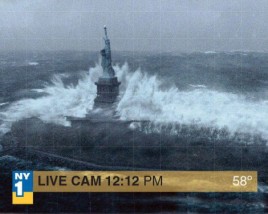

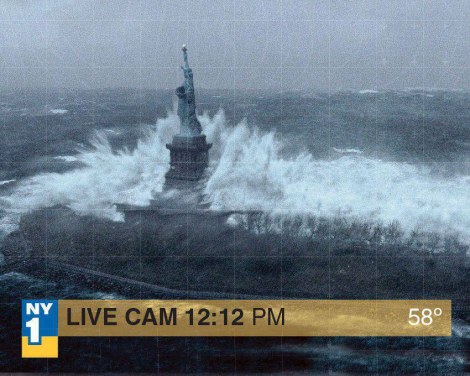
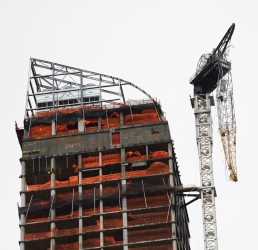
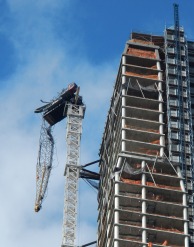
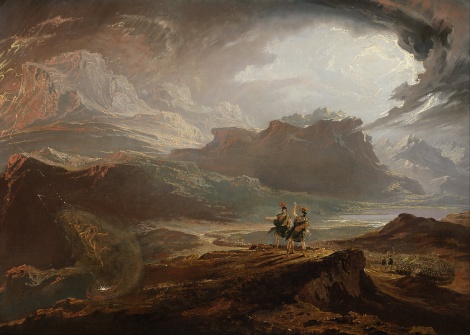
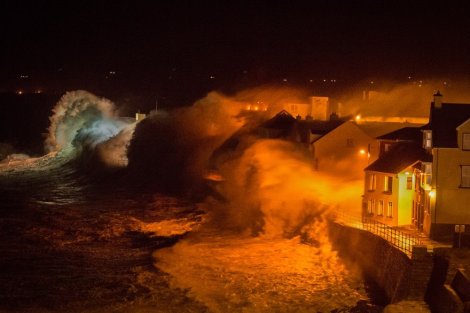
Good day I am so happy I found your weblog, I really found you
by mistake, while I was browsing on Aol for something else, Nonetheless
I am here now and would just like to say kudos for a marvelous post and a all
round thrilling blog (I also love the theme/design), I
don’t have time to read through it all at the minute but
I have book-marked it and also included your RSS feeds, so when I have
time I will be back to read a lot more, Please do keep up the excellent work.